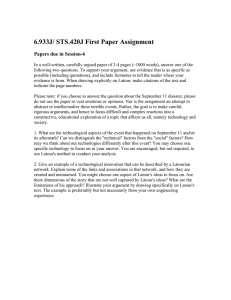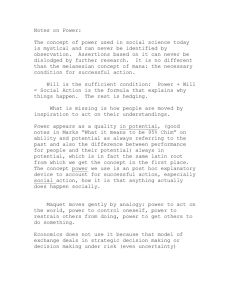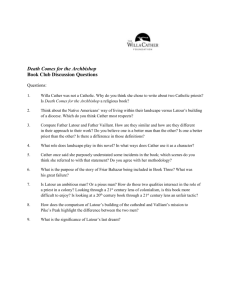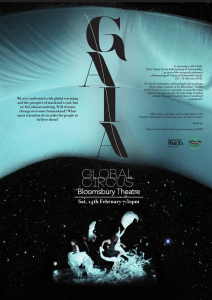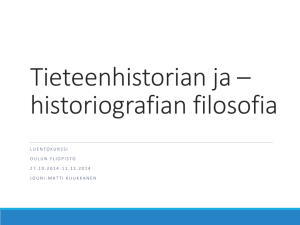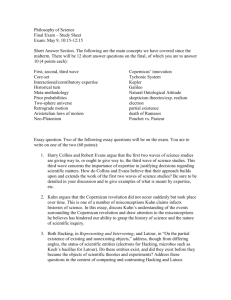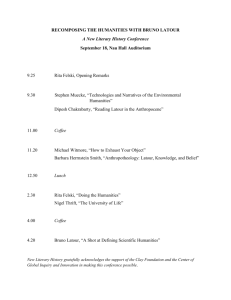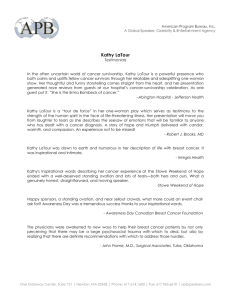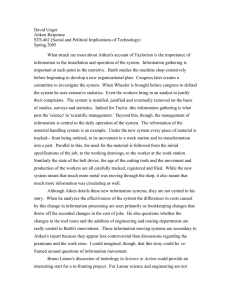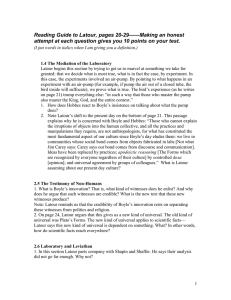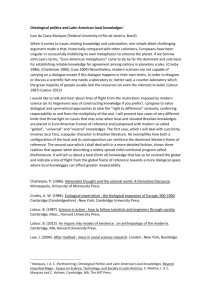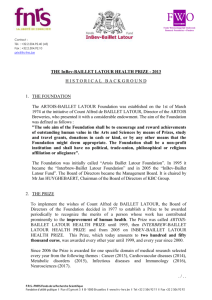Guide for reading Latour: Part I
advertisement
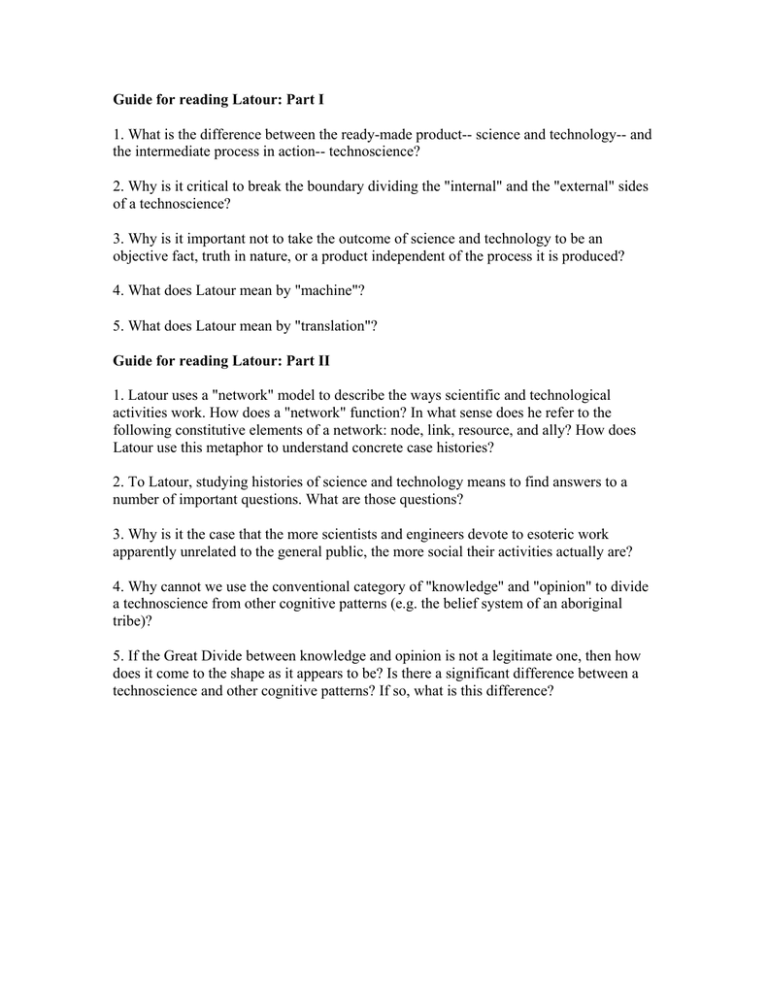
Guide for reading Latour: Part I 1. What is the difference between the ready-made product-- science and technology-- and the intermediate process in action-- technoscience? 2. Why is it critical to break the boundary dividing the "internal" and the "external" sides of a technoscience? 3. Why is it important not to take the outcome of science and technology to be an objective fact, truth in nature, or a product independent of the process it is produced? 4. What does Latour mean by "machine"? 5. What does Latour mean by "translation"? Guide for reading Latour: Part II 1. Latour uses a "network" model to describe the ways scientific and technological activities work. How does a "network" function? In what sense does he refer to the following constitutive elements of a network: node, link, resource, and ally? How does Latour use this metaphor to understand concrete case histories? 2. To Latour, studying histories of science and technology means to find answers to a number of important questions. What are those questions? 3. Why is it the case that the more scientists and engineers devote to esoteric work apparently unrelated to the general public, the more social their activities actually are? 4. Why cannot we use the conventional category of "knowledge" and "opinion" to divide a technoscience from other cognitive patterns (e.g. the belief system of an aboriginal tribe)? 5. If the Great Divide between knowledge and opinion is not a legitimate one, then how does it come to the shape as it appears to be? Is there a significant difference between a technoscience and other cognitive patterns? If so, what is this difference?
